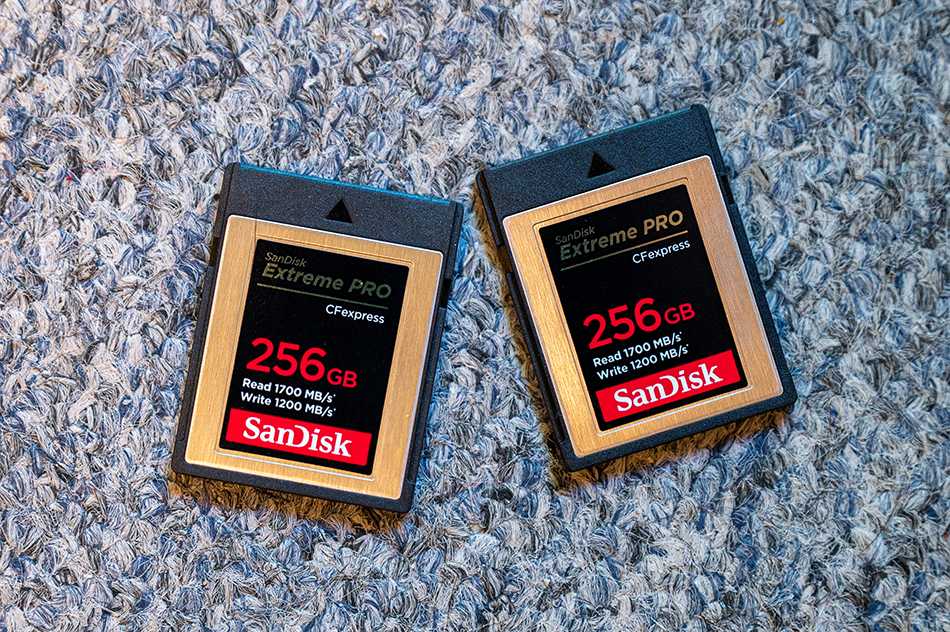
Generally speaking, faster is better when it comes to photography. Faster autofocus, faster frames per second, and faster shooting with no buffer hold ups are good. But remember, sometimes it is good to be slow in photography….like when creating a stunning landscape composition. Take your time, study the scene, and create a great image.
When is comes to speed, flash cards really make or break your day. If you shoot any kind of action like wildlife, sports or even fast moving storms across the landscape, you might be shooting a lot of frames in a short amount of time. And if you have a high resolution camera, and a slow flash card, you might fill up your buffer and have to wait until it clears before you can take another photograph. Nothing is worse than missing a shot while you wait on your buffer to clear. And it only gets worse when you get back to your hotel. Everyone is headed to the lounge to share their amazing photos from the day, but you are still waiting for your images to download. Ugg! I tend to be pretty high energy, especially after a cup of coffee, and nothing drives me more crazy than waiting on my images to download so I can take a look at them.
Thankfully there is a way to never fill your buffer, or wait on long downloads…it is the new CF Express flash cards. This format of card has been used in Nikon cameras for awhile as XQD. Now most camera companies are adopting this format, largely in part to the incredible performance and acceptance of CF Express. File sizes just keep getting bigger and bigger, so camera companies have to use a card that can write and transfer these huge files quickly, especially high res video production.

Just how fast are these cards? Top SD flash cards read at 300MB/s and write at 260MB/s. I use Sandisk Extreme Pro UHS-II cards in my 45MB D850, and these cards perform excellent. Only rarely do I run into buffer stalls…and this mainly when shooting wildlife at 9FPS using the extra battery grip. XQD cards are next up in speed, being slightly faster as SD cards. When I started shooting the Nikon Z cameras, I tried out XQD cards. These cards write at 400MB/s and read at 440MB/s. My D850 will take this style of card as well, and I definitely notice the faster speeds both in the camera and when downloading. And one thing I really liked about the style of the XQD cards was their ruggedness. These Type B (XQD and CF Express) cards are super reliable and durable, and I have never had a card fail.
But then CF Express landed, and it was like the sound barrier had just exploded in my office. These cards write at 1200 MB/s, and read at 1700 MB/s! Are you kidding me? That is three times as fast as XQD, which was already very fast. But it gets better. CF Express card readers can use USB-C connections and cables, which is twice as fast as USB 3.0. Plug a CF Express into your USB-C port on your computer, and you will barely get your boots off before your card is downloaded. These cards are a little more expensive; a Sandisk CF Express Extreme Pro 128GB card costs $240, about $50 more than a 128GB SD card. Check your camera to see if it can use a CF Express, this is a new card format being used in newer cameras. If you shoot Nikon, the Z6 and Z7 use the cards, as well as the D6. Using CF Express with the 21MP D6 is almost comical. I can hold the shutter button down at 14 FPS and the camera never stops shooting….I stop at about 30 seconds…if I haven’t gotten the shot in 420 frames I need to quit and sell my gear!
I hope everyone has fun plans for the holiday weekend! I’m headed back up to Rocky Mountain NP…the first snowstorm of the season is predicted, 6 inches of snow, and I want to get a few more new images for our online advanced landscape class. Only two spots left if you are interested; we are covering topics we don’t cover on workshops, techniques and concepts to take your landscape photography to the next level.
Happy shooting!